


In Italian
Edward Hopper in New York: tour of the Village discovering the background places of some among the most famous paintings of the painter and founder of the American realism. A few hours walk to find out the lights, shadows, inspirations and the characters of Hopper’s NYC.
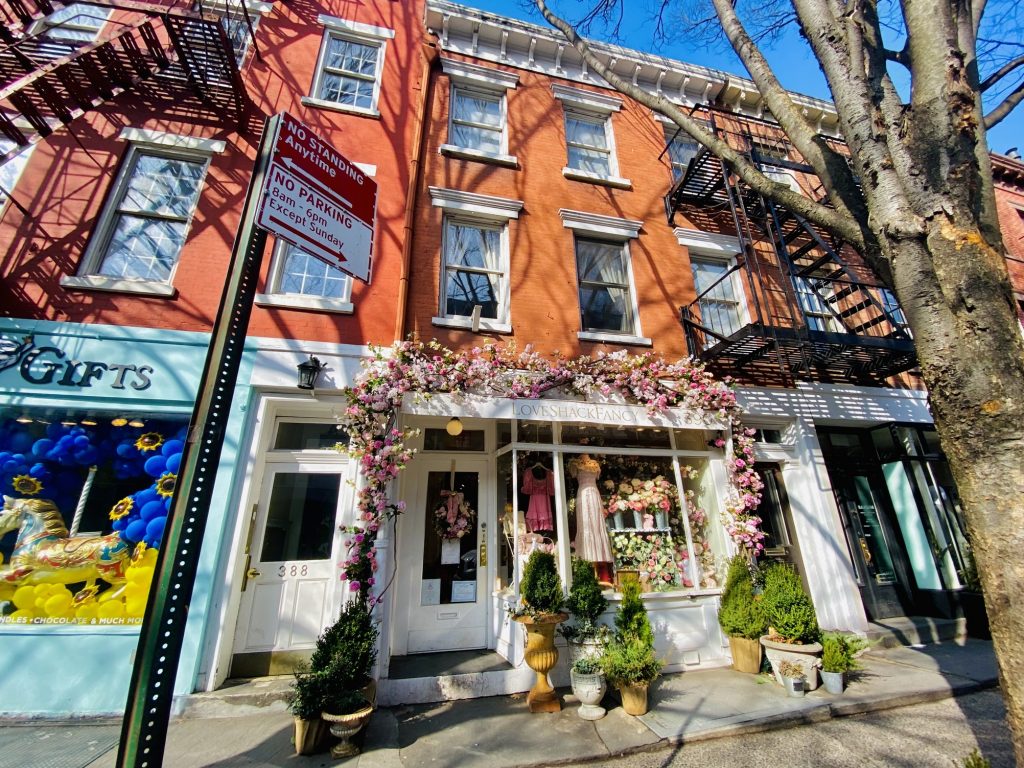
Edward Hopper in New York: tour of the Village
A tour, or better a nice few hours walk through the New York’s Village where Hopper lived for 40 years with his wife Josephine among the views, the corners, lines of light and shadow, and the shop-window which were the background and the inspiration for most of his works.
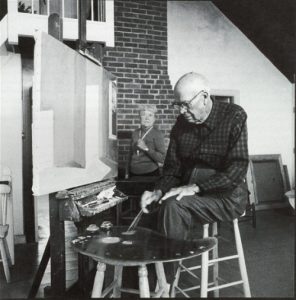
Edward Hopper in New York: tour of the Village. Ed and Jo working
Where Nighthawks – between the old Crawford Launch and the West Village Florist – or Drugstore – where today the marvelous Three Lives & Company Bookstore rises – were born. And the unforgettable Early Sunday Morning, too – did you know that street, that building and those windows are still there, in Bleecker Street?! – then reaching his studio in Washington Square Park, passing by the original headquarter of the Whitney Museum, where he exhibited his first works.
In the middle, colors, savors, atmospheres and people of the Village – since ever art and cinema location (How many movies and TV series have been filmed here!), small cafés, diners and stores, brick and red stone row houses, parks and avenues.
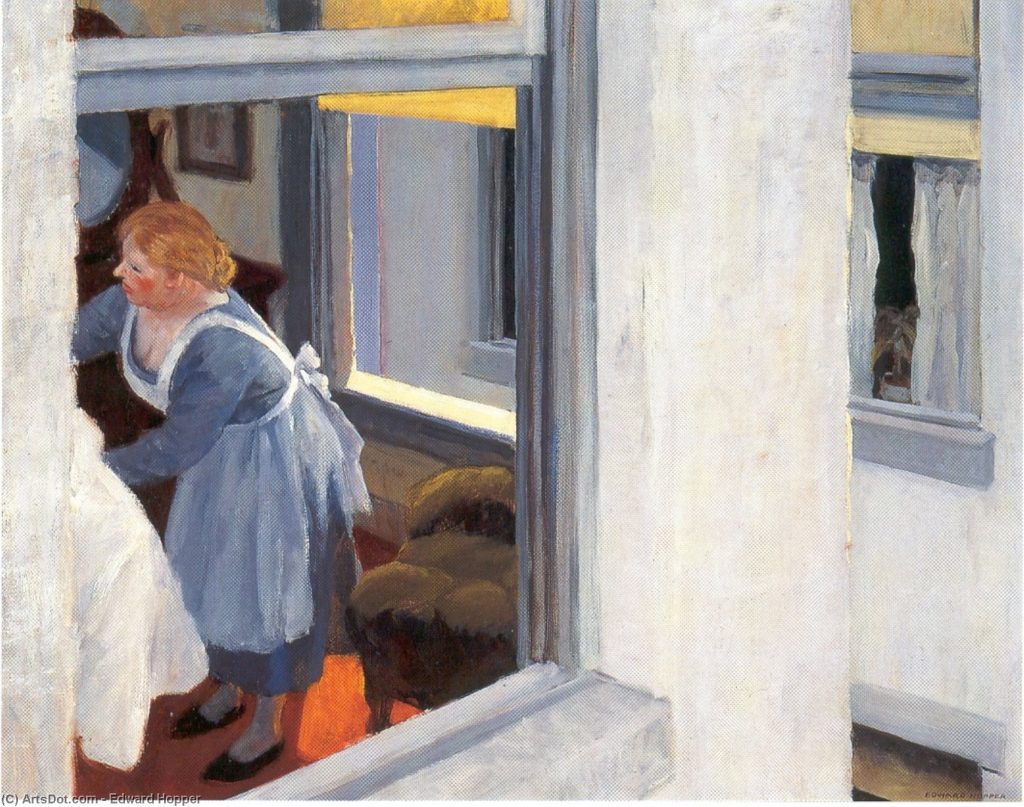
Edward Hopper in New York: tour of the Village. Apartment Houses, 1923
Edward Hopper’s Village was a place made of light, shadows, corners and common people intent on living their routine, one through the lives of the other, whether it was a woman fixing a fruit bouquet in a shop-window, or men and women sit together at a café, or a waitress working, observed – almost spied on – from a window of an apartment on the corner.
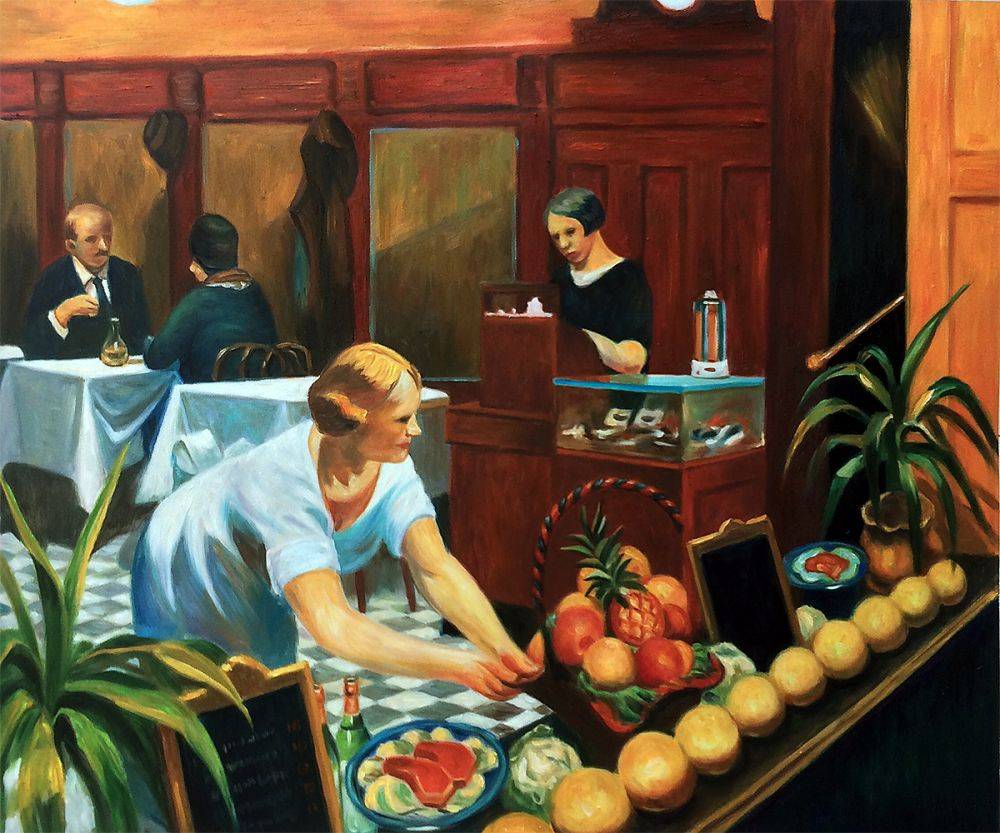
Edward Hopper in New York: tour of the Village, Tables for Ladies, 1930
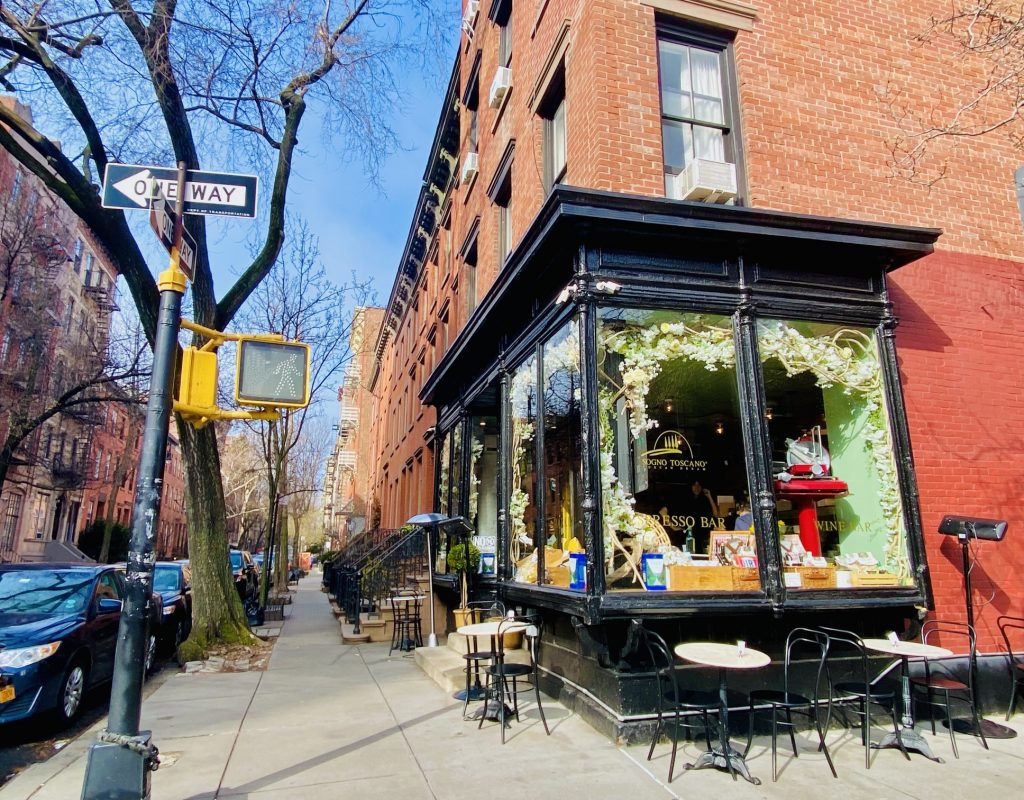
Edward Hopper in New York: tour of the Village
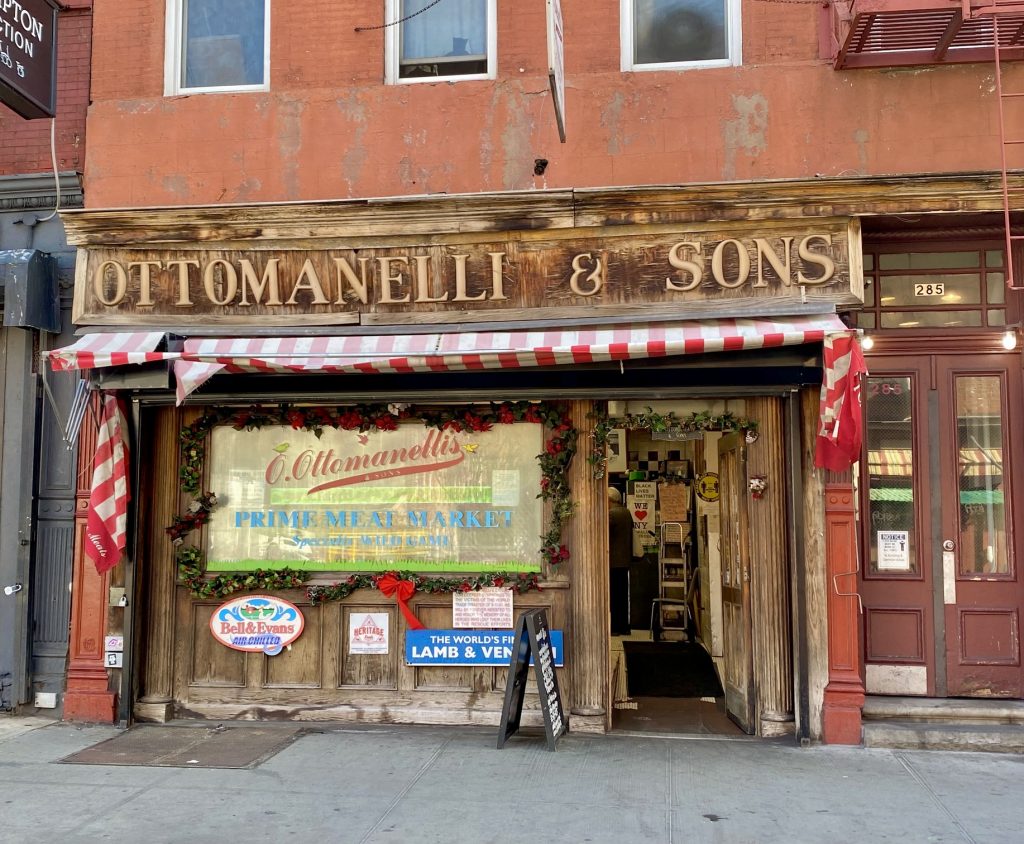
Edward Hopper in New York: tour of the Village
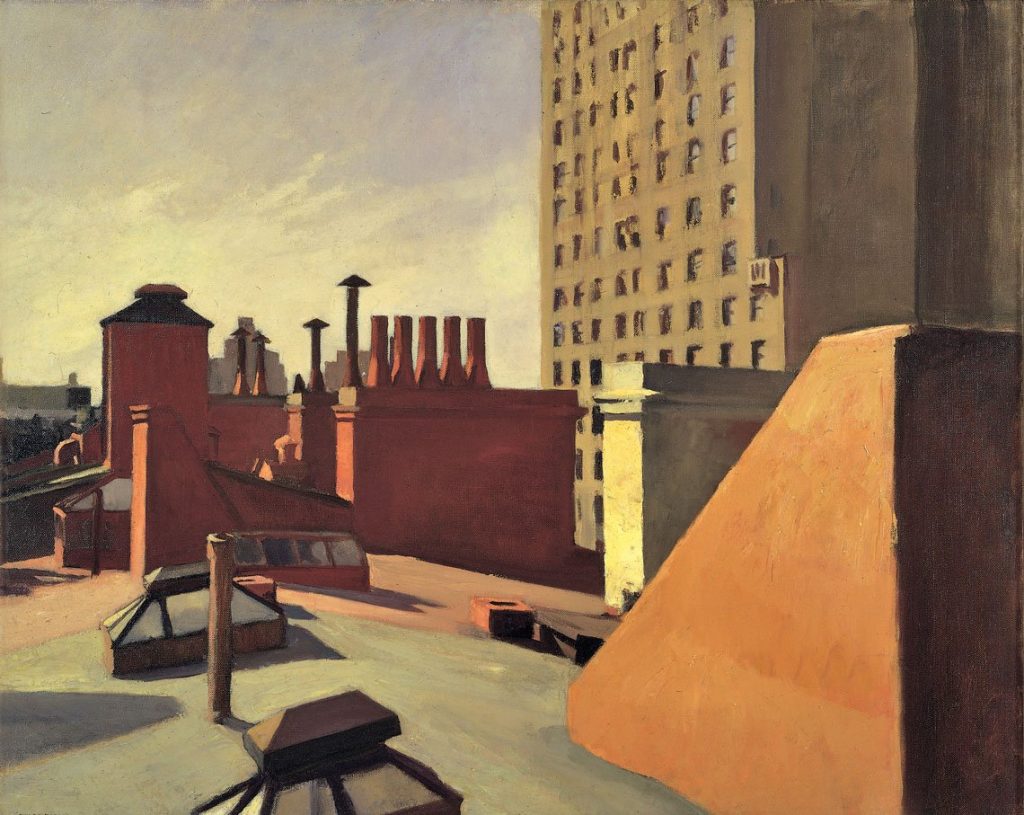
Edward Hopper in New York: tour of the Village. City Roofs, 1932
Hopper’s Village was lines, movement and stillness at the same time, and also small details, from which the greatest of the charm could arise. Not many people know the artist was used to go to the top of the building hosting his apartment-studio to paint his watercolors, painting even only the roofs, if observed with the right light. That’s what happened with City Roofs, a 1932 painting.
Find down here a short walking tour – divided into stages, starting from 7th Ave and Greenwich Ave as far as Washington Square Park – where is still possible to find characters, lines and inspirations of Hopper’s works and “his” Village.
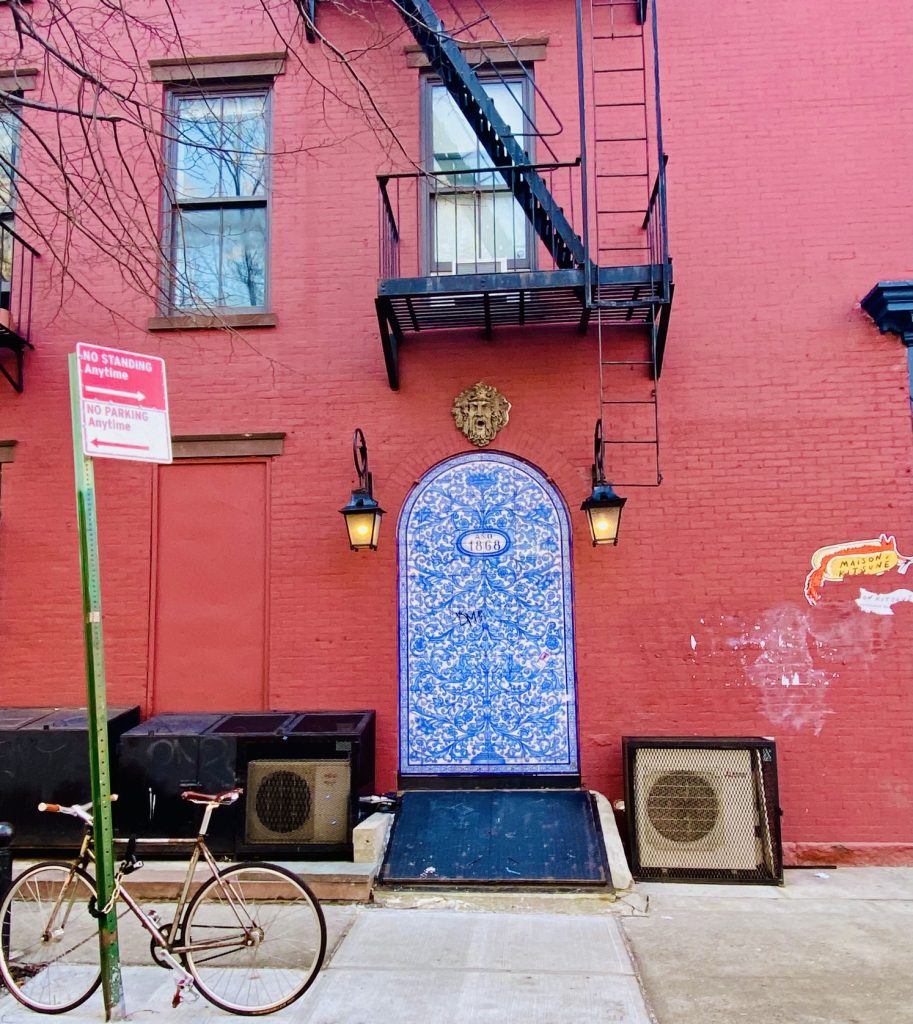
Edward Hopper in New York: tour of the Village
The 1937 Sheridan Theater painting – today at the Newark Museum of Art in Newark – depicted the inside of the Loew’s Sheridan Theater.
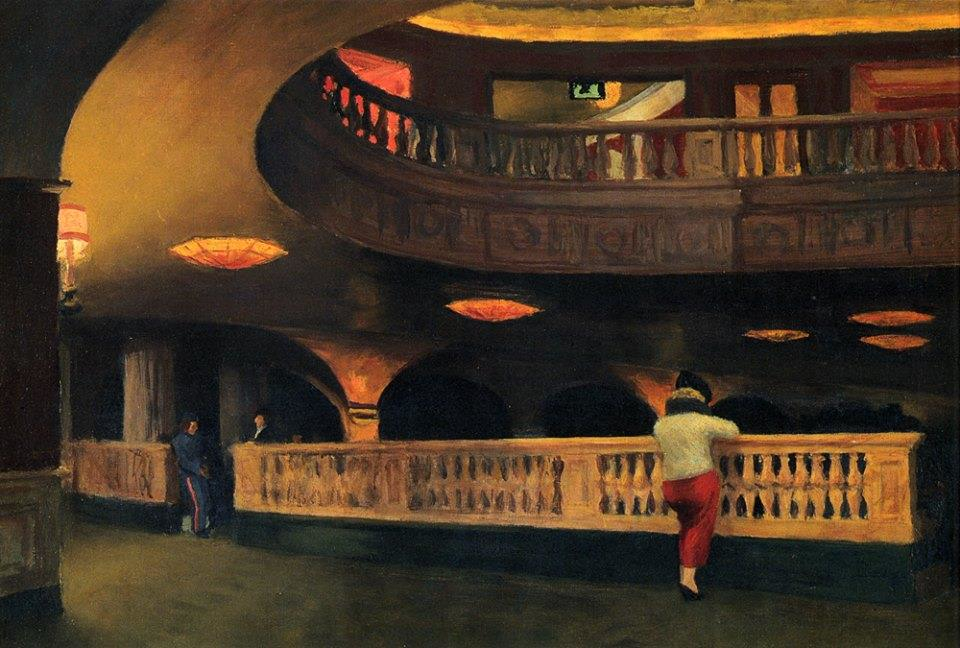
Edward Hopper: tour of the Village. Sheridan Theater, 1937
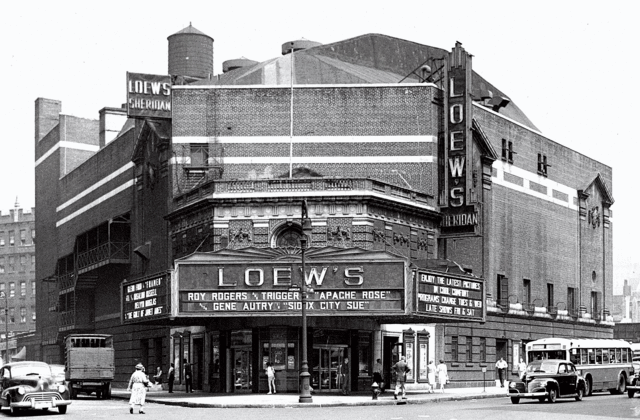
Hopper, tour of the Village, the old Loew’s Sheridan Theater
A famous theater located on the triangle-shaped block delimited by Greenwich Ave, 7th Ave and the West 12th Street.
It was demolished in 1969 and replaced by the buildings of the St. Vincent’s Hospital, then destroyed and replaced in turn by the St. Vincent Park and the NYC AIDS Memorial.
Today it is difficult to imagine the theater and its insides, although the buildings and the stores in the nearby – many of those present today are still the original ones – help in getting an idea of the context and Hopper’s view.
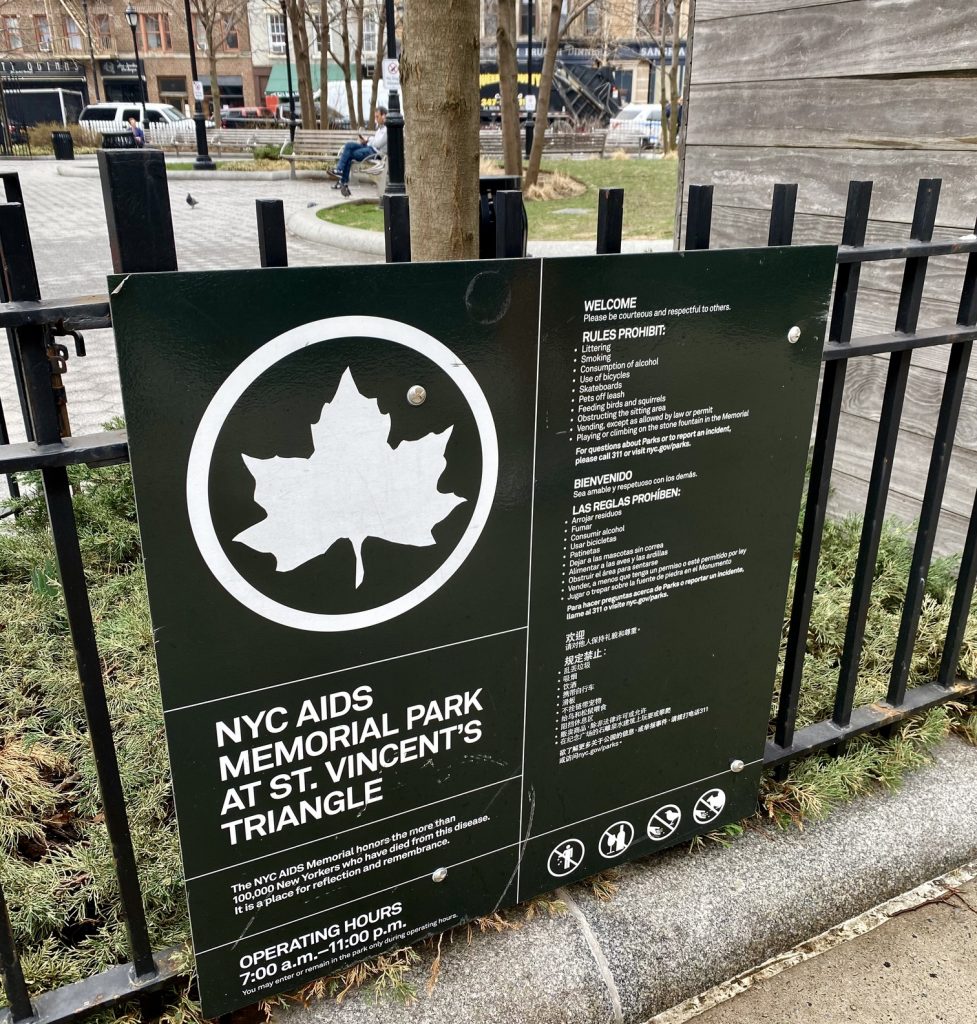
Edward Hopper: tour of the Village. NYC AIDS Memorial
Nighthawks is one of the most popular and famous Hopper’s paintings.
Despite being exhibited at and belonging to the Art Institute of Chicago, it was realized in New York, exactly in 1942 – in those years, Hopper and his wife Jo spent their time between the winters in NYC in the house-studio in Washington Square Park, and the summers in their house in Truro, Cape Cod.
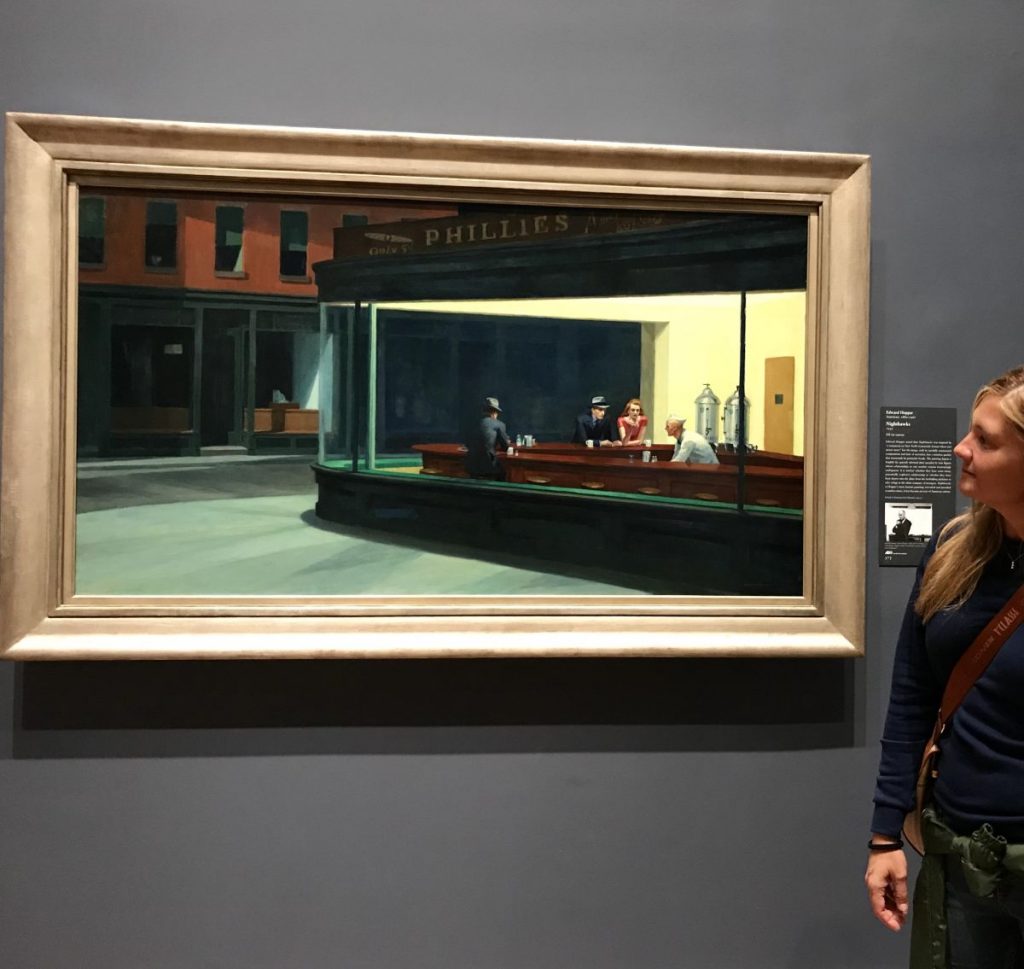
Edward Hopper places in the USA: a short itinerary from New York as far as New England
“Ed has just finished a very fine picture-a lunch counter at night with 3 figures. Night Hawks would be a fine name for it.
E. posed for the two men in a mirror and I for the girl. He was about a month and a half working on it.”
(Josephine Hopper)
Edward Hopper, usually reluctant to tell his sources of inspiration, has always claimed – maybe to mislead fans and journalist – that the idea of the painting “was born from a restaurant in Greenwich Avenue in New York, where two streets meet”. The Whitney Museum experts concluded that the atmosphere inspiring the nighthawks was the result of the fusion of two diners between Greenwich Ave and 7th Ave.
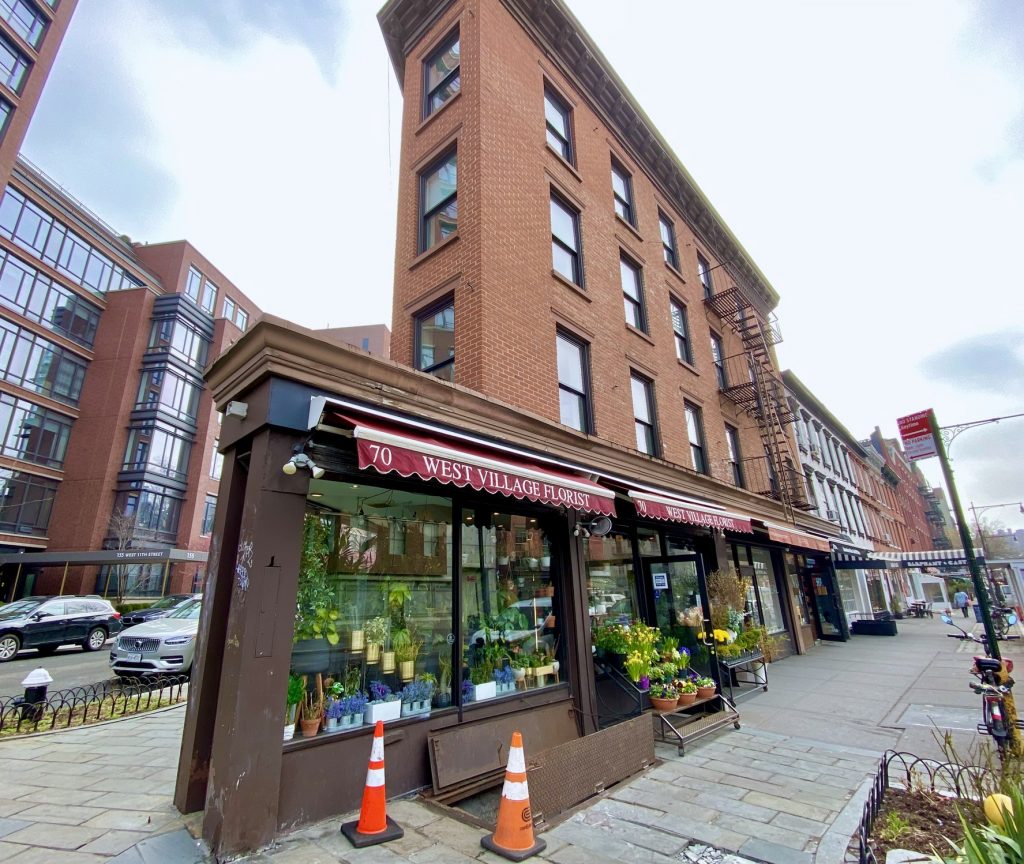
Edward Hopper: tour of the village, West Village Florist
Maybe a mix between the atmosphere of the old Crawford Lunch – that Hopper himself frequented and that today does not exist anymore – and the double angle glass door of what today is the West Village Florist – that still proudly displays between Greenwich Ave and 7th Ave.
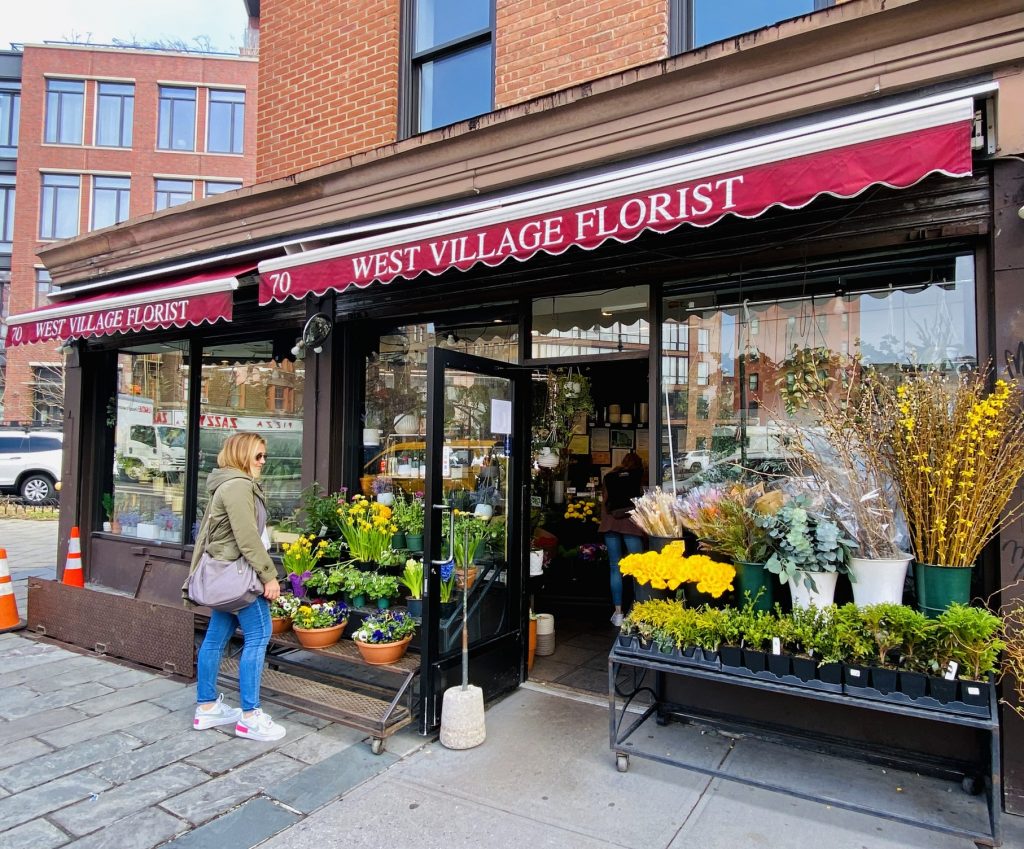
Edward Hopper in New York: tour of the Village, West Village Florist
Another of his most iconic paintings is 1927 Drugstore.
A night atmosphere of the classic drugstore on the corner, in a desert and threatening silently New York, today exhibited in Boston, at The Museum of Fine Arts.
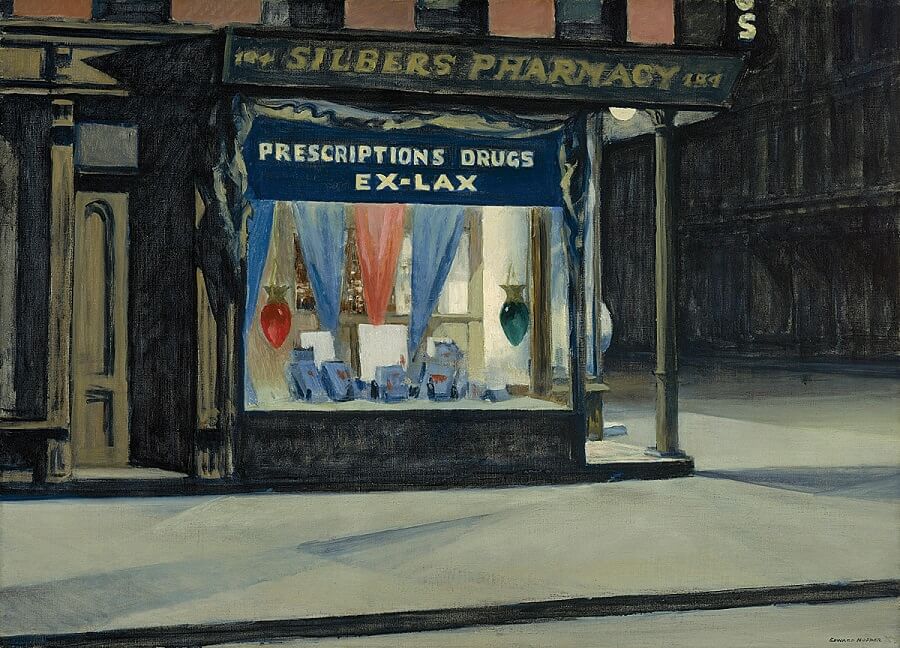
Edward Hopper in New York, tour of the Village: Drugstore, 1927
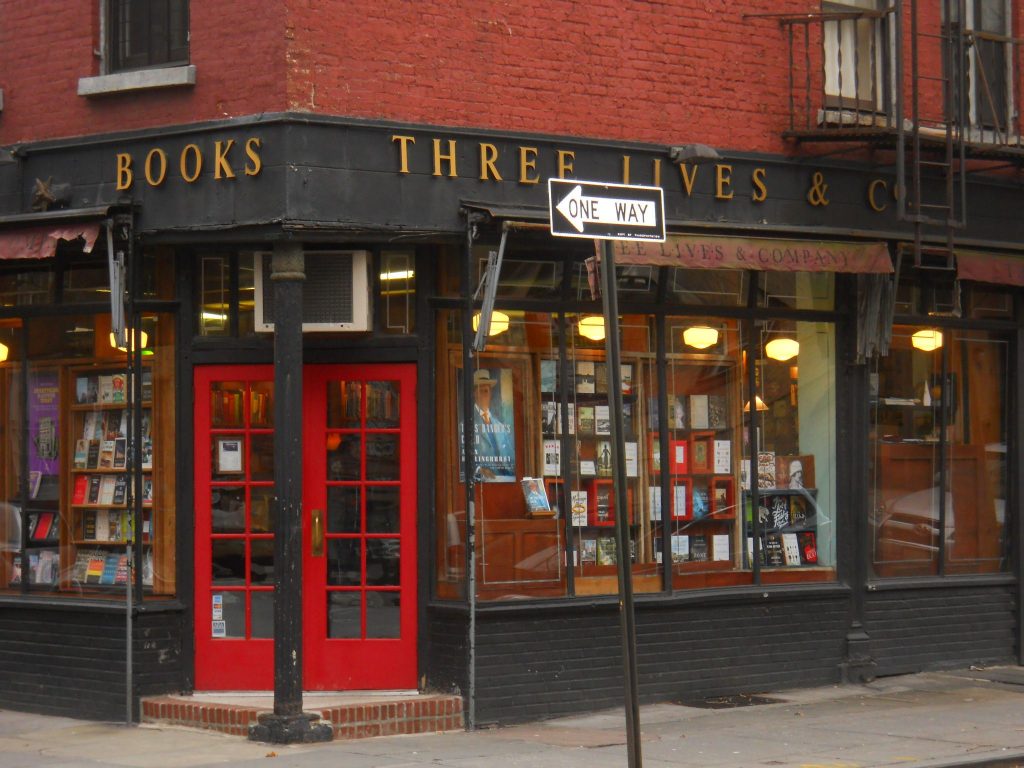
New York: tour of the Village following in the footsteps of Hopper. Three Lives & Company Bookstore
Hopper was inspired by the store on the corner downstairs in the building at 154 West, 10th Street on the south side of the crossroad with Waverly Place, in a space today occupied by the wonderful Three Lives & Company Bookstore.
Despite the intended use has changed, the charm of the place is really stunning!
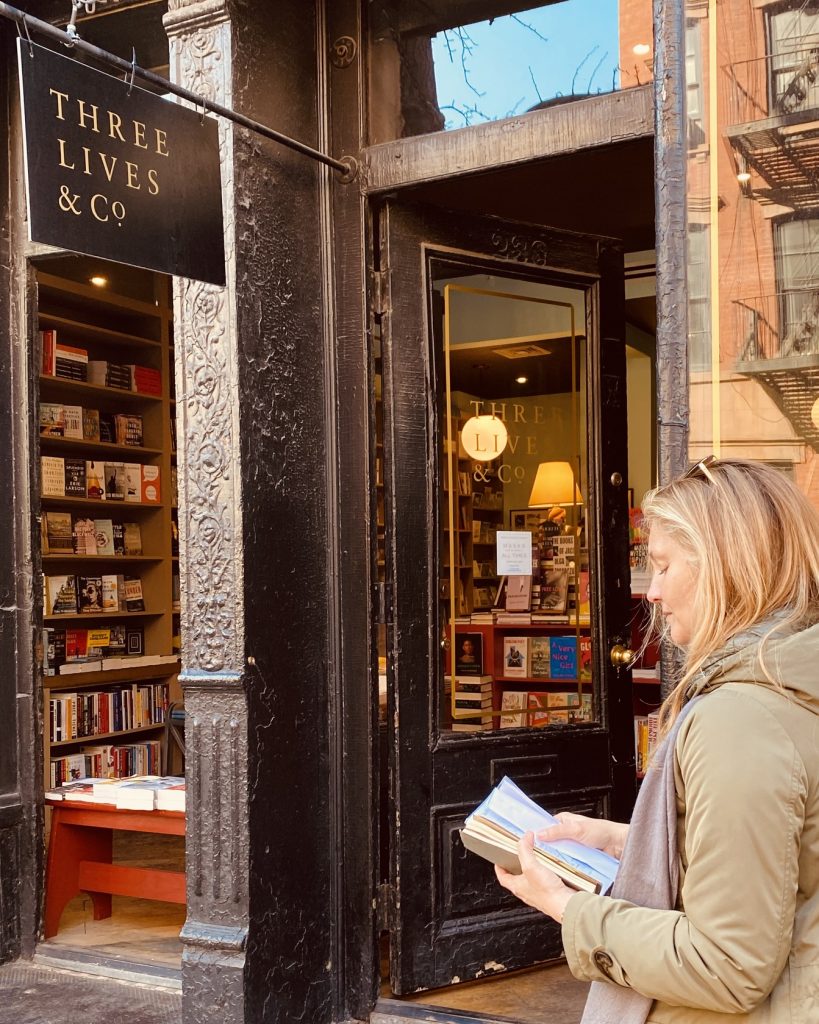
Tour of the Village, three Lives & Company Bookstore
And let’s talk about Early Sunday Morning – one of my favorite by far – painted in 1930 and today exhibited at the Whitney Museum in New York City.
The painting represents some stores closed on early sunday morning, at the beginning identified with a series of buildings on 7th Avenue in Manhattan, so much so that Hopper himself stated that in fact the original title was Seventh Avenue Shops.
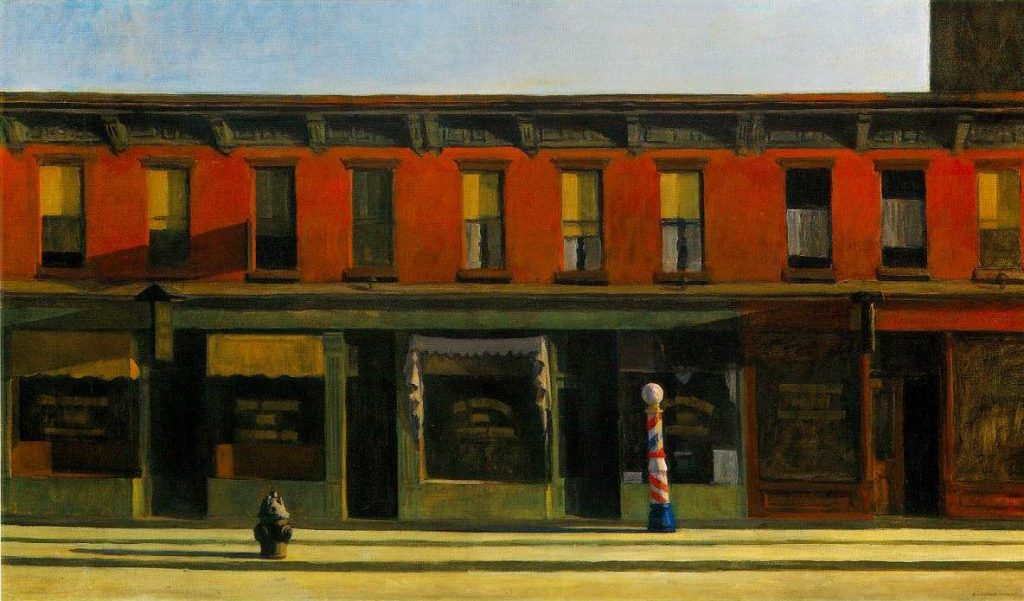
Edward Hopper, tour of the Village: Sunday Morning
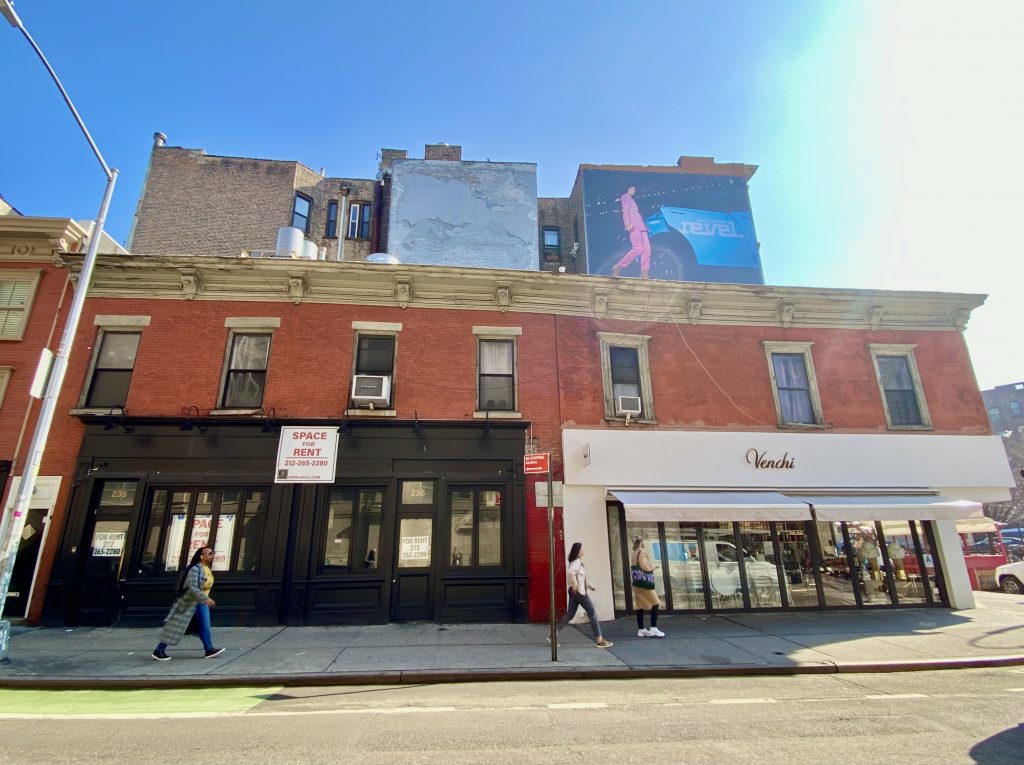
Tour of the Village: Sunday Morning
Later, according to the type of buildings and shadows in that particular moment of the day – it was clear that Hopper had tried to mislead critics, fans and journalists, and that the original inspiration of the painting came from the series of paintings that still today can be found at 233-237, Bleecker towards Carmine Street, so not on Seventh Avenue.
And actually, if you find yourselves there early in the morning in a clear and sunny day, the charm is even so strong that you can think being physically in his painting. Seeing is believing!
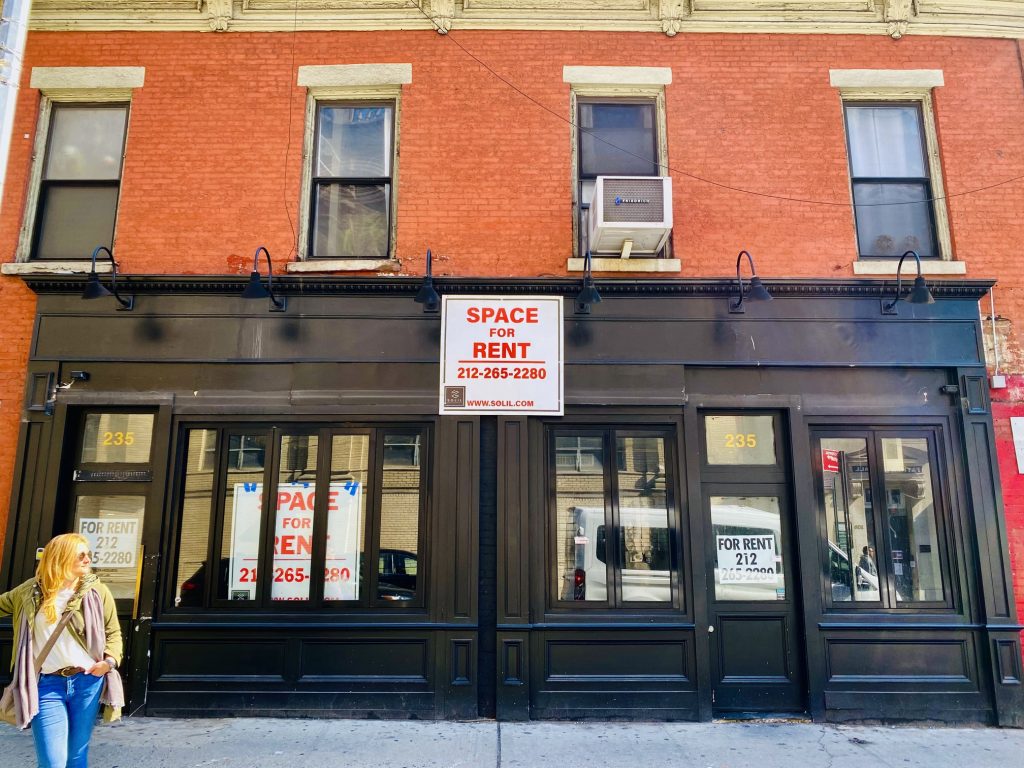
Edward Hopper in New York, tour of the Village: Sunday Morning
From Bleecker Street reach in a few minutes the building at number 8-12, 8th Street West.
It is the first seat of the Whitney Museum, the Whitney Studio Club, an exhibition space for young artist founded in 1908 by the collector and artist Gertrude Vanderbilt Whitney, where Edward Hopper’s first personal exhibition took place in 1920.
Today the building hosts the New York Studio School of Drawing Painting and Sculpture.
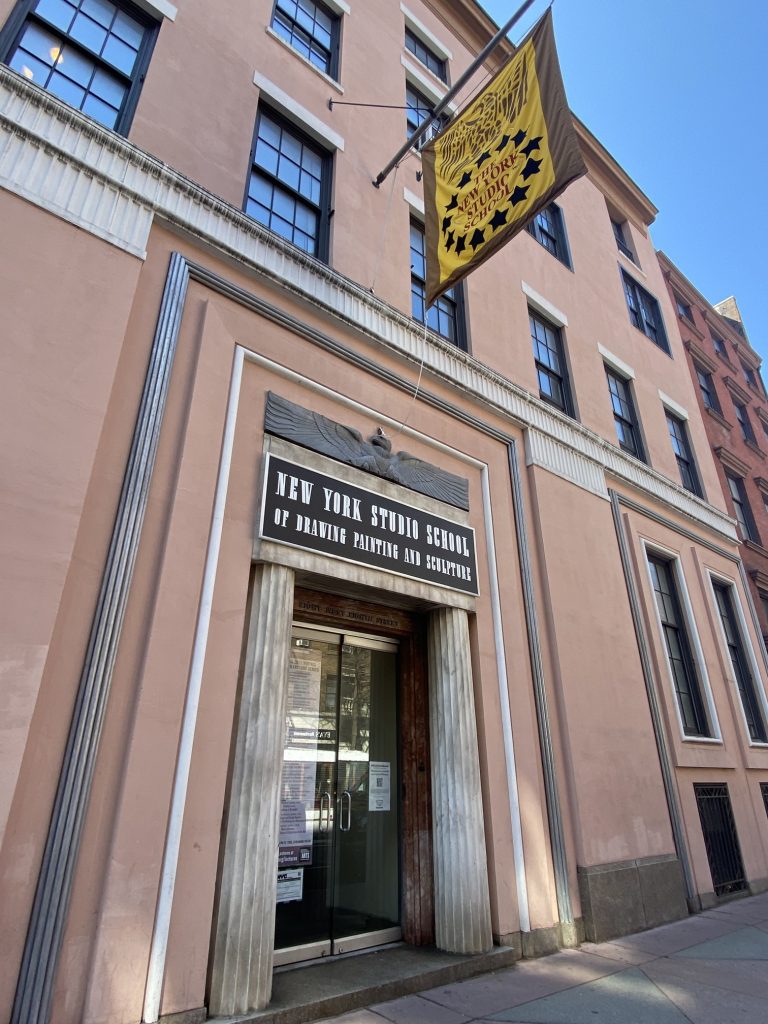
Hopper, tour of the Village: Whitney Studio Club
The tour ends at 3, Washington Square Park North.
The Edward Hopper Studio – also known as The Row – is the place where Edward Hopper and his wife Josephine have lived from 1913 until their death.
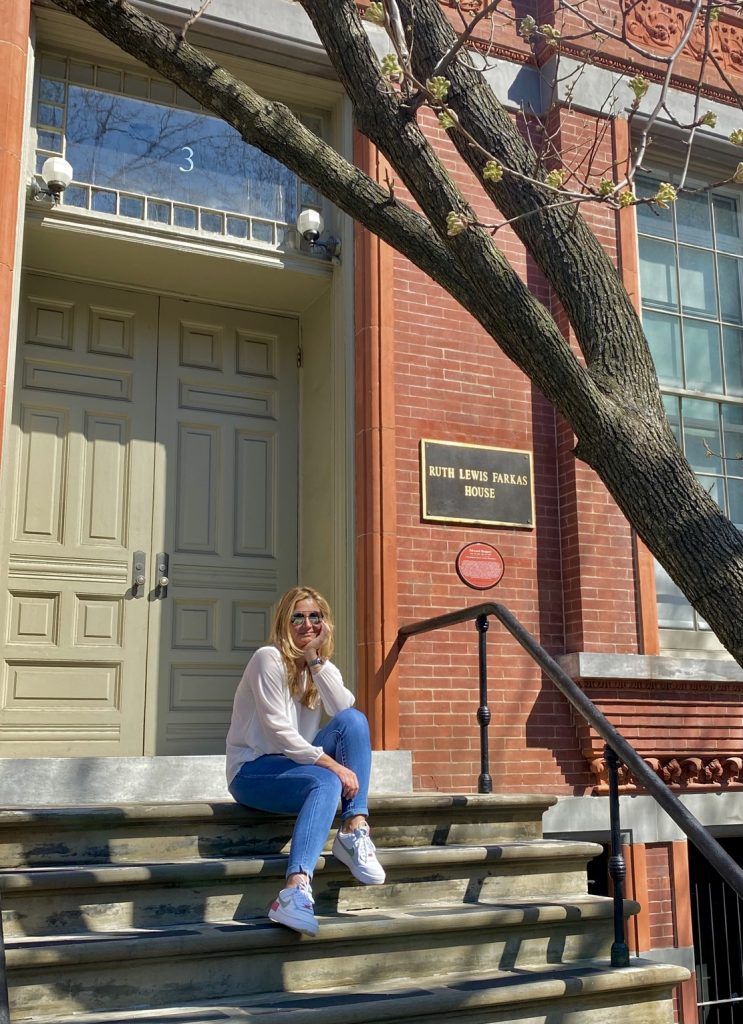
Edward Hopper in New York, tour of the Village: Washington Square Park Studio
The Studio has been faithfully preserved with the aim of turning it into a sort of place of worship and at the same time as an incentive and model for students, artists and fans. There is still the special easel that was built by Hopper himself to support his canvas, his printer, some brushes, the old stove, a small bookcase and the front window giving a panoramic view of Washington Square Park and many of the near buildings.
You perceive the unique atmosphere that created in those rooms over time. In Summer days so much light enters that turning our gaze towards the outside we become the unaware protagonists of one of his works. Really an amazing experience!
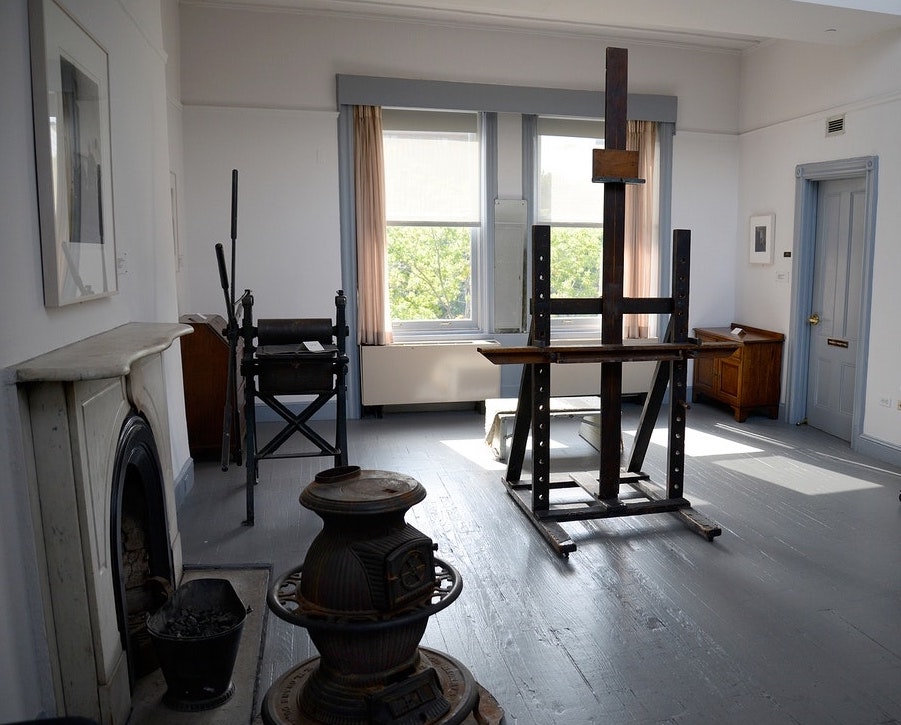
Edward Hopper places in the USA: New York, Edward Hopper Studio
The tours are strictly guided and can be exclusively organized upon appointment, calling Amanda Lopez well in advance, phone number 212-998-5900 or booking in advance the Open House New York weekend in October.
For further insights into the history, stages and artistic inspirations of one among the USA painters still beloved and celebrated, find here a report-itinerary dedicated to all the places tied to Edward Hopper in the USA, from New York as far as New England.